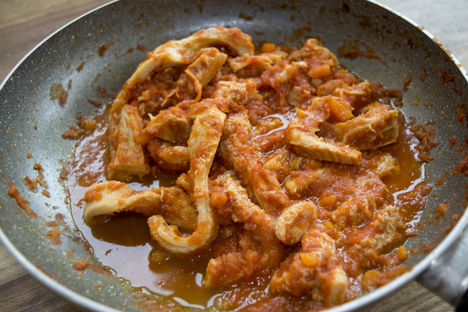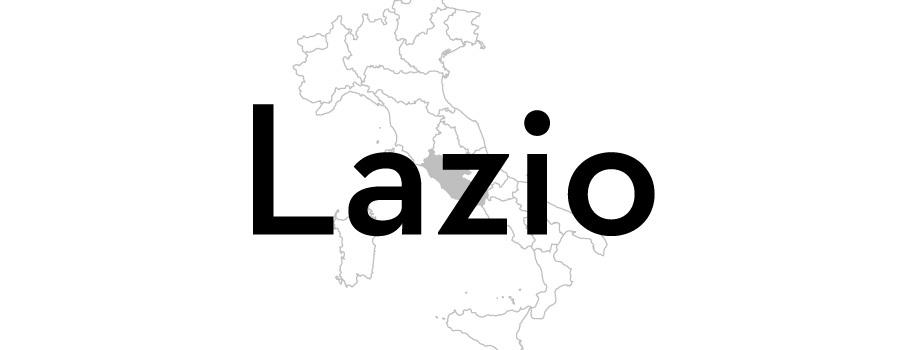
Quinto Quarto: inside Rome’s offal obsession
Like many of the best things in Italy, Rome's obsession with offal was born from the kitchens of the poor. We dive into the history behind the city's famous 'fifth quarter' meats, and take a look around the old slaughterhouse district of Testaccio.
Quinto Quarto: inside Rome’s offal obsession
Like many of the best things in Italy, Rome's obsession with offal was born from the kitchens of the poor. We dive into the history behind the city's famous 'fifth quarter' meats, and take a look around the old slaughterhouse district of Testaccio.
Nowhere encapsulates Rome’s gastronomic philosophies quite like its famous Testaccio neighbourhood. Take a stroll through the streets and you’ll find trattorie serving up classic Roman fare like rigatoni con la pajata (pasta with calf intestines), a deep, rich, oxtail stew called coda alla vacinara, and coratella – a dish of heart, lungs and oesophagus, sautéed with purple artichokes. This sort of food is a once in a lifetime novelty for many of us, but in Rome, this is just lunch.
Testaccio started life as a dock – actually a very important one for imperial Rome. The city imported thousands upon thousands of amphorae of olive oil every year to feed the extravagant tastes of its citizens, but instead of reusing the terracotta pots – called ‘testae’ in latin – they discarded them by the docks, stacking them efficiently into a towering mountain. These pots gave the area its name – ‘Testaccio’ literally translates as ‘broken pots’ – and Monte Testaccio (‘broken pot mountain’) stands tall and proud to this day as a monument to Roman resourcefulness (and a somewhat carefree attitude to waste). Today, the mountain has become a fantastic wine cellar thanks to the excellent ventilation provided by the pots, and is home to nightclubs, shops and bars, which all nestle in amongst the amphorae. It was even famously used as a gun battery by legendary Italian general Giuseppe Garibaldi in his defence of Rome from the French in 1849.
Like the mountain of broken pots that gives the area its name, Testaccio has a similar reputation for thriftiness. After the fall of Rome in 476, Testaccio became largely abandoned, and stayed that way until 1888 when the area was redeveloped as the city’s municipal slaughterhouse – or mattatoio in Italian. Encompassed by the Tiber on one side and walls on the other, Testaccio became its own little community – dedicated housing was built for mattatoio workers and satellite businesses like meat-packers, tanners, butchers and restaurants sprung up nearby. By the turn of the twentieth century, Testaccio was home to the largest slaughterhouse and meat market in Europe.
Even during the early twentieth century, Rome still operated a system whereby meat was distributed among citizens depending on their social status. Animals that came into the mattatoio would be broken down into quarters – or quartos in Italian – depending on quality. The primo quarto consisted of the very best cuts and would go to the nobility, and the rest of the animal would be allocated accordingly – the secondo quarto would go to the clergy, the terzo quarto to the bourgeois and the quarto quarto to members of the army. As for the rest of Rome’s inhabitants, they were left with the quinto quarto, or ‘fifth quarter’. These were quite literally the leftovers, the bits that the rest of Rome deemed unfit for consumption – brains, feet, intestines, lungs, hearts and more. Nose-to-tail eating is very much in vogue today – we delight in the novelty of eating chicken hearts on skewers or bone marrow on toast. In Rome, however, this was a way of life, necessitated by the simple need to eat and survive. The city’s poor would scoop up the unwanted leftovers from Testaccio, and with typical Roman resourcefulness, use them to make something delicious.
Contrary to popular opinion, many of Rome’s famous offal dishes were likely not born in Testaccio. Most agree that the city’s Jewish residents – forced into a ghetto by Pope Paul IV in the sixteenth century – are responsible for the city’s thrifty cooking, but these dishes were certainly made more popular by the day-to-day business of the mattatoio. The slaughterhouse workers often took quinto quarto home as part of their pay and they brought new life to these unwanted cuts, finding clever ways to mask the pungent smell and strong flavour. Dishes like tripe (trippa alla Romana) and oxtail stew (coda alla vacinara) utilised long, slow braising methods to mellow the strong offal character. Soaking offal in milk was another common tactic to remove the pungency from sweetbreads, intestines and tripe. Eventually, this style of cooking spread far beyond the confines of Testaccio, and quinto quarto cuisine has been tightly woven into the fabric of Rome ever since.
By 1975, the meat-packing district had outgrown its usefulness to Rome and the mattatoio moved to the outskirts of the city, as did many of the workers. Old working class residences in Testaccio became private flats, and the old slaughterhouse became part of the Roma Tre University campus. The carts and carcasses that used to clatter up and down the streets were replaced by beard-and-bicycle hipsters. There’s a new market – one of the best in the city – that serves picture-perfect fruit and vegetables, as well as fish, meat (not just offal), cheese and salumi. In true Roman fashion, Testaccio hasn’t been thrown on the scrap heap – it has a new lease of life.
One thing hasn’t changed though. The trattorie still serve fried calf brains, intestines with milk chyme and all the grisly offal you can possibly manage. Testaccio may have caught the gentrification bug, but don’t be fooled – the legacy of quinto quarto lives on.

